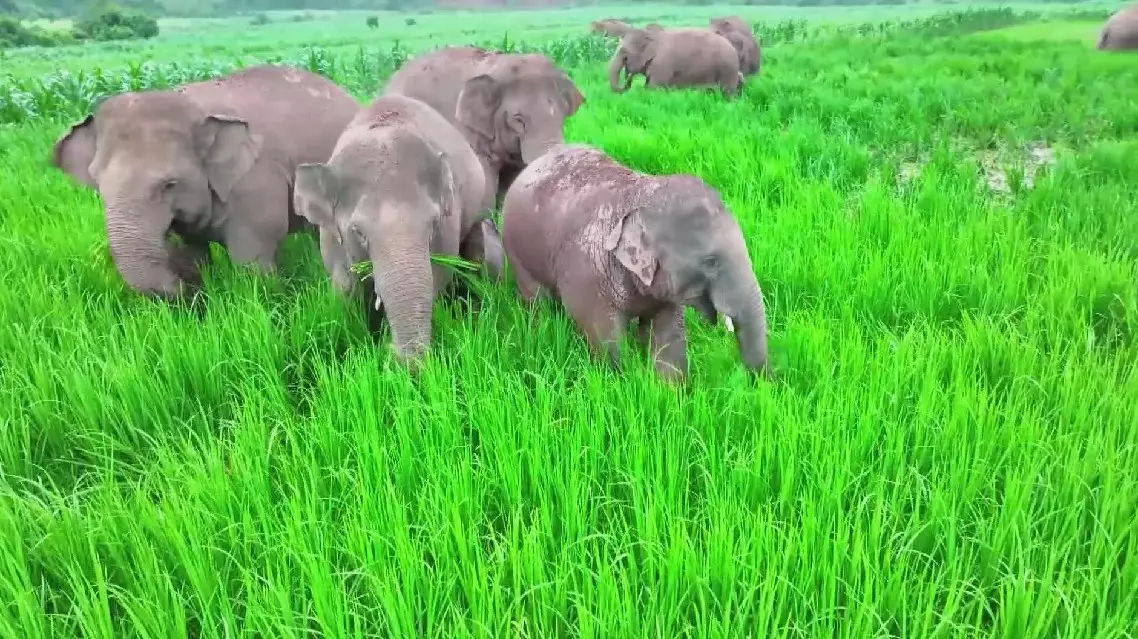Southwest China's Yunnan Province, one of the country's most important treasure houses of biodiversity, has been continuously improving the compensation mechanism for property losses caused by wild animals, as an effort to better promote biodiversity protection.
As a Chinese saying goes, "All beings flourish when they live in harmony and receive nourishment from Nature." The Earth is full of vigor and vitality because of biodiversity, which lays the foundation for human survival and development.
Known as "the kingdom of plants and animals", Yunnan is an ecological security barrier in southwestern China. The province has always incorporated biodiversity protection in its overall economic and social development, and made great efforts to meet the high standard for biodiversity protection.
The draft of compensation measures for damage caused by terrestrial wildlife in Yunnan was published for comments on April 30. Grassroots staff and wildlife monitors visited households in various villages to solicit ideas and learn about the needs of local people. Local authorities have worked on details to gradually improve relevant laws and regulations so as to promote the harmonious coexistence between man and nature.
A group of 21 Asian elephants have been recently monitored around Dashujiao Village, Jiangcheng County in Pu'er City. As soon as they are spotted in the village, monitors would issue an on-site warning to villagers, and which can also be sent through their online monitoring platform.
When a warning was lifted as the elephants walked into the forest after they made a havoc for about an hour in and around the village, some rice plants, which were about to start head sprouting, were damaged.
"The elephants ate some of the rice plants and damaged some others. Starting from 2022, we have substantially increased crop compensation. The previous compensation was only 800 plus yuan (about 112 U.S. dollars) per mu (about 0.067 hectares), but now it has been greatly increased. If the crops are mature, we now have a compensation of more than 1,500 yuan per mu," said Diao Faxing, an elephant monitor of Jiangcheng County.
Wildlife protection not only involves protecting their habitats, but also reducing property losses caused by them. With the continuous improvement in protection measures, the corresponding property loss compensation mechanism has also been established.
"We have a mobile application specially developed for compensation. After measuring the damage, we will determine the aggregate amount of compensation. If we have measured the damage today, the compensation will be paid to villagers in a week," said Diao.
In October 2021, Yunnan released 20 local standards for the protection of three wild animals -- the Yunnan snub-nosed monkey, Asian elephant and green peacock, filling in a number of gaps in wildlife protection standards.
In order to protect peacock population and their habitat, Shuangbai County in Chuxiong Yi Autonomous Prefecture expanded the protected area to 17,534 hectares and conducted habitat restoration work.
"Protecting the flagship species of green peacocks means protecting their river valley habitat. This is very important for maintaining the stability of the ecological environment in the river valley," said Wu Fei, an associate researcher at the Kunming Institute of Zoology of the Chinese Academy of Sciences.
With the Yunnan Biodiversity Conservation Strategy and Action Plan 2024-2030 released on May 21, the province will step up its efforts to promote the positive interaction between biodiversity conservation and green economic and social development.

Yunnan improves conpensation mechanism for wildlife-caused losses to promote biodiversity protection









